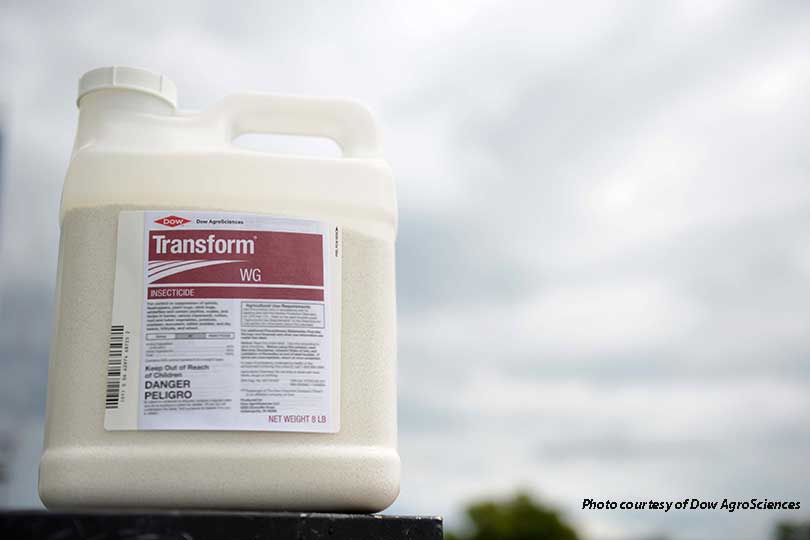By Jessica Domel
News Editor
American farmers will once again be able to use popular insecticide sulfoxaflor, or Transform WG, to protect their crops.
The Environmental Protection Agency (EPA) announced the new registration for sulfoxaflor and Closer SC by Dow AgroSciences Friday.
The new registration is approved with fewer uses for farmers and additional use requirements to protect pollinators, like bees, according to the EPA.
Sulfoxaflor may now only be used on crops that are “not attractive to pollinators or for crop production scenarios that minimize or eliminate potential exposure to bees.”
Approved crop use includes: barley; triticale; wheat; turf grass; brassica leafy vegetables; bulb vegetables; leafy vegetables and watercress; leaves of root and tuber vegetables; root and tuber vegetables; berries like grape, blueberry and cranberries; canola; fruiting vegetables; okra; pome fruit; ornamentals; potatoes; stone fruit; succulent and dry beans; tree nuts; and pistachios.
Citrus, cotton, cucurbits, soybeans and strawberries are not included in the registration.
The new registration also limits application times.
For crops that are bee attractive and included in the new registration, application of sulfoxaflor is only allowed post-bloom, when bees are not expected to be present, and will not be allowed on any crops grown for seed, including turf.
Application must be made with medium to coarse spray nozzles and is prohibited if wind speeds exceed 10 miles per hour. A 12-foot on-field, down-wind buffer is required if there is any blooming vegetation bordering a field to be treated.
In Texas, sulfoxaflor is commonly used to ward off sugarcane aphids on sorghum-related crops.
Sorghum is not listed in the EPA registration for sulfoxaflor, so Section 18 emergency exemption is needed each year.
The exemption for Texas was issued in April and is good for one year.
EPA’s registration of sulfoxaflor was invalidated earlier this year after the Ninth Circuit Court of Appeals in California invalidated the registration after determining there was not enough information in the insecticide’s packet regarding the potential impact on honeybees.
The issue was brought to the court by a group of beekeepers and environmental groups in California.
Since that time, more than 70,000 people, including farmers and farm organizations like Texas Farm Bureau, submitted comments on the need for sulfoxaflor.
After reviewing those comments and reevaluating the data on sulfoxaflor, EPA moved to approve the new registration.

